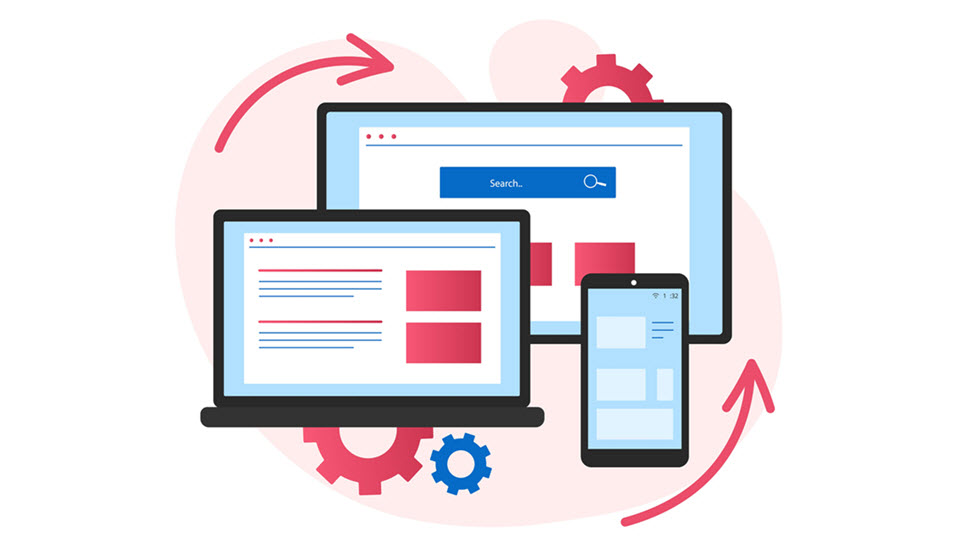For real estate professionals, a website powered by IDX (Internet Data Exchange) can be a game-changer. IDX allows you to integrate MLS listings directly onto your site, offering visitors real-time access to property data while generating leads and building brand authority. However, as powerful as IDX is, many agents and brokers stumble in their initial setup, leading to poor user experience, low visibility, and underwhelming results.
In this guide, we’ll explore the most common mistakes real estate professionals make when starting with IDX and provide practical solutions to ensure your integration works effectively and efficiently from day one.
1. Choosing the Wrong IDX Solution
The Mistake:
There are many IDX providers on the market, and not all are created equal. Some agents rush into using the cheapest or most advertised platform without assessing whether it meets their specific needs.
Why It’s a Problem:
An unsuitable IDX solution can lead to:
- Slow-loading pages
- Poor mobile responsiveness
- Limited customization options
- Inadequate SEO performance
- Clunky user experience
How to Avoid It:
- Do your homework: Compare features like map search, lead capture tools, CRM integration, mobile optimization, and SEO-friendliness.
- Ask for demos: Most reputable providers offer live demos or trial periods.
- Read reviews: Look for honest feedback from agents with similar business models.
- Evaluate scalability: Make sure your IDX platform can grow with your business.
2. Ignoring SEO Best Practices
The Mistake:
Many beginners believe IDX automatically optimizes your website for search engines. That’s a dangerous assumption.
Why It’s a Problem:
Some IDX platforms display property listings using iframes or subdomains. Search engines like Google struggle to index this content, making it harder for your site to rank in search results.
How to Avoid It:
- Choose an SEO-friendly IDX provider: Look for platforms that offer indexable listings, customizable URLs, and schema markup.
- Create original content: Supplement your listings with blog posts, neighborhood guides, or market updates.
- Optimize metadata: Customize title tags, meta descriptions, and image alt texts for key pages.
- Build backlinks: Create valuable content that attracts links from local sites, directories, and news sources.
3. Neglecting User Experience (UX)
The Mistake:
Real estate sites with IDX are often overloaded with confusing layouts, unnecessary widgets, and poor navigation.
Why It’s a Problem:
A clunky user experience can frustrate visitors and drive them away before they even explore listings or contact you.
How to Avoid It:
- Use a clean, responsive design: Prioritize mobile usability and a simple layout.
- Test your site: Use tools like Hotjar or Google Analytics to observe how users interact with your site.
- Improve loading speeds: Optimize images, minimize code, and use a reliable hosting provider.
- Add smart filters: Let users easily search by price, location, property type, etc.
4. Lack of Lead Capture Strategy
The Mistake:
Many agents install IDX and assume leads will flow in. But if your IDX doesn’t encourage users to sign up or contact you, you’re missing out on valuable business.
Why It’s a Problem:
Without an effective lead capture system, your site becomes just another data aggregator, offering value with no return.
How to Avoid It:
- Add registration prompts: Encourage visitors to sign up for listing alerts, saved searches, or market updates.
- Use soft gates: Allow users to browse a few listings before requesting registration.
- Connect to a CRM: Make sure your leads are automatically stored and categorized for follow-up.
- Add live chat or AI chatbots: Provide real-time engagement options for site visitors.
5. Overlooking Mobile Optimization

The Mistake:
Some agents only test their IDX integration on desktop, forgetting that most users now browse on mobile.
Why It’s a Problem:
A mobile-unfriendly site alienates a large portion of your audience and hurts your Google rankings.
How to Avoid It:
- Choose a mobile-optimized IDX solution: Test its responsiveness on different devices.
- Use a mobile-first web design: Start with mobile layouts, then expand to desktop.
- Simplify navigation: Make search filters, contact forms, and CTA buttons easy to use on small screens.
6. Failing to Customize the Design
The Mistake:
Using generic IDX templates without customizing them to fit your brand identity.
Why It’s a Problem:
Your site looks like thousands of others. This makes it hard to stand out and build trust with potential clients.
How to Avoid It:
- Customize colors, fonts, and layouts to align with your brand.
- Add your content: Include personal introductions, testimonials, area guides, and video tours.
- Highlight niche markets: If you specialize in luxury condos, rural homes, or a specific neighborhood, emphasize it in your IDX layout.
7. No Ongoing Content Strategy
The Mistake:
Thinking IDX listings alone are enough to keep your site fresh and engaging.
Why It’s a Problem:
Search engines value consistent, original content. Without it, your site can become stale and lose rankings.
How to Avoid It:
- Start a blog: Share market insights, home-buying tips, staging advice, etc.
- Update neighborhood pages: Add new listings, recent sales, local events, and school info.
- Use video: Tour homes, explain the buying process, or answer common questions.
- Automate listing updates: Make sure your IDX plugin is pulling the latest MLS data daily.
8. Ignoring Compliance and Licensing Issues
The Mistake:
Not understanding the legal obligations related to IDX usage, MLS rules, and content display.
Why It’s a Problem:
Violating your MLS or state licensing rules can lead to penalties, loss of access to listings, or even legal action.
How to Avoid It:
- Read your MLS IDX rules carefully: Each MLS has specific policies on branding, listing display, co-broker info, etc.
- Include required disclaimers: Many MLS boards require a specific disclaimer text on your site.
- Display listing credits: Ensure that listing agent and broker information is visible where required.
- Consult with your broker or legal advisor: Get clarity on what’s permissible before launching your IDX platform.
9. Lack of Analytics and Conversion Tracking
The Mistake:
Setting up IDX but failing to monitor performance or track user behavior.
Why It’s a Problem:
Without data, you won’t know what’s working or how to improve.
How to Avoid It:
- Set up Google Analytics and Google Search Console: Track traffic, sources, bounce rates, and more.
- Use conversion goals: Monitor signups, form submissions, and click-to-call events.
- A/B test landing pages: Try different layouts or CTAs to optimize for engagement.
- Use heatmaps or session replays: See where users click and how they navigate.
10. Skipping a Proper Onboarding and Training Process
The Mistake:
Assuming IDX is plug-and-play without fully learning how it works.
Why It’s a Problem:
You’ll miss out on advanced features like saved search automation, lead scoring, or CRM integrations.
How to Avoid It:
- Attend training sessions: Most IDX providers offer onboarding webinars or tutorials.
- Read the documentation: Get familiar with setup guides and support materials.
- Ask for help: Don’t hesitate to reach out to your provider’s support team with questions.
- Experiment with features: Try building custom searches, tweaking widgets, or segmenting leads.
11. Forgetting About Retargeting and Email Marketing
The Mistake:
Letting leads visit your IDX site without following up or re-engaging them later.
Why It’s a Problem:
Most visitors don’t convert on their first visit. Without nurturing, they’re lost forever.
How to Avoid It:
- Install a Facebook Pixel or Google Ads tag: Retarget site visitors with relevant ads.
- Use email drip campaigns: Send personalized follow-ups based on saved searches or viewed listings.
- Send monthly newsletters: Keep your brand top-of-mind with updates, featured listings, and market trends.
- Leverage SMS reminders: Gently nudge interested buyers with property alerts or event invites.
12. Trying to Do It All Alone
The Mistake:
Attempting to handle IDX setup, content creation, lead management, and design without outside help.
Why It’s a Problem:
You may spread yourself too thin or miss critical steps that hurt your site’s performance.
How to Avoid It:
- Hire a web designer or developer: They can customize your IDX integration and fix technical issues.
- Work with a marketing team: Build a strategy for content, SEO, and lead nurturing.
- Partner with a virtual assistant: Delegate tasks like blog posting, email replies, or data entry.
- Join real estate communities: Get advice from others who’ve successfully implemented IDX.
Final Thoughts
Integrating IDX into your real estate website can dramatically enhance your online presence, generate high-quality leads, and establish your credibility. But it’s not a set-it-and-forget-it solution.
By avoiding the common pitfalls—like poor user experience, ignoring SEO, failing to track performance, and neglecting branding—you can set yourself apart from competitors and create a platform that truly supports your business goals.
Think of IDX as a foundation—not the whole house. Build on it strategically, stay informed, and keep improving your digital real estate experience.













